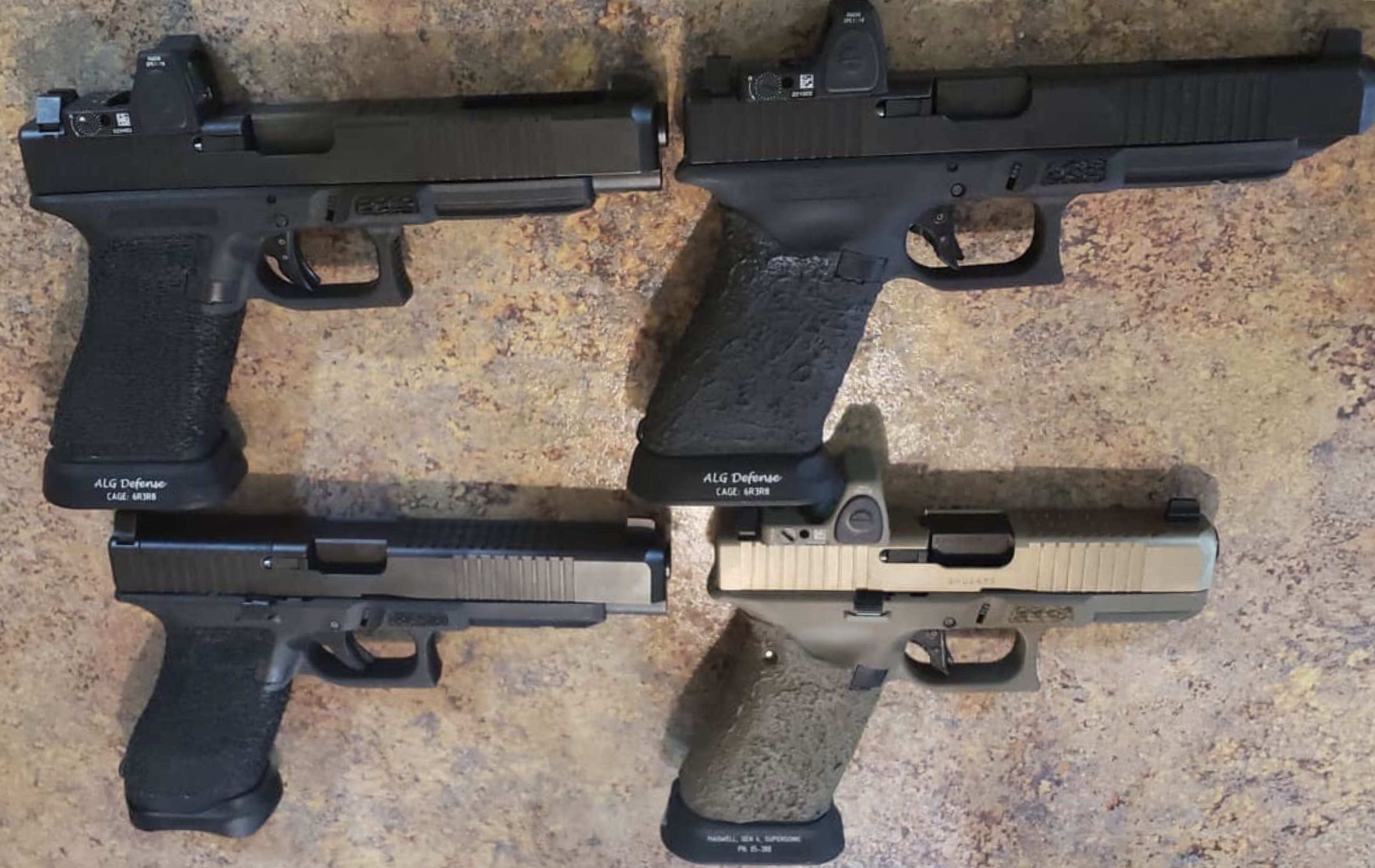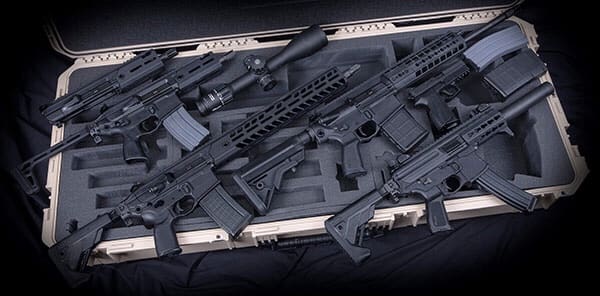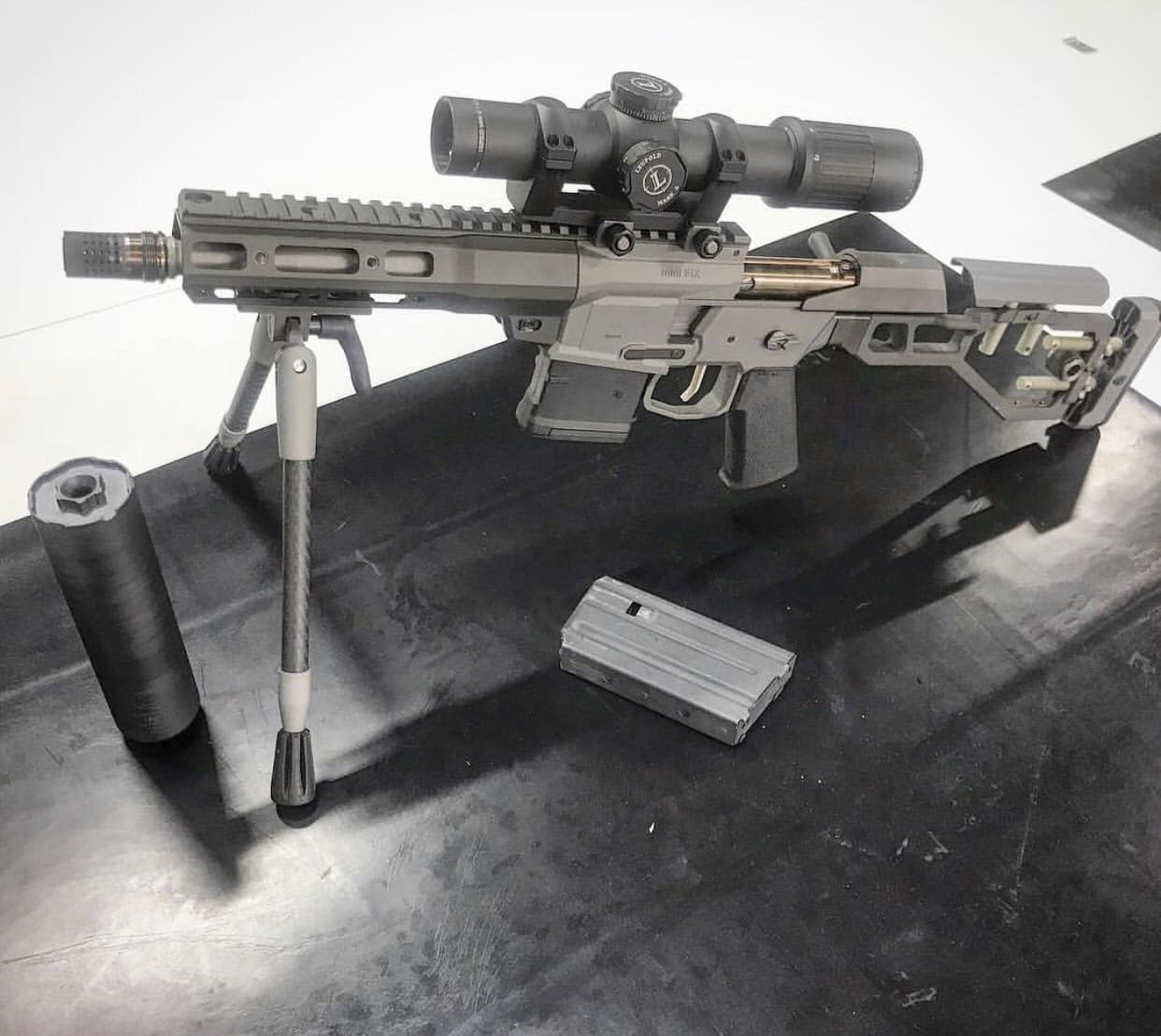
Something wicked this way comes…… from Presscheck Consulting and Overwatch Precision.
Newington, N.H. (December 20, 2018) – SIG SAUER has confirmed the award of a five-year contract with the U.S. Army Contracting Command for commercial off the shelf (COTS) rifles and pistols to include MCX rifles, MPX sub-guns, 716G2 rifles, SP2022 pistols, TANGO6 series riflescopes, suppressors, and various SIG SAUER accessories.

“This is a very exciting announcement for SIG SAUER and we are extremely proud that the U.S. Army has selected SIG SAUER products for this award,” said Ron Cohen, President and CEO, SIG SAUER, Inc. “For this contract the U.S. Army has identified a wide array of SIG SAUER product including pistols, rifles, optics, and suppressors. We are extremely humbled that they have recognized our ability to meet the broad scope and demands of this contract while recognizing the quality and versatility of our products for the battlefield.”
The U.S. Army identified the following SIG SAUER product for the COTS contract:
SIG SAUER MCX Rifles: conceived for the demands of the special operations community and engineered for adaptability, accuracy, and durability. Available in over 500 configurations the MCX offers the utmost in mission-specific flexibility featuring user changeable barrels, free-floating M-LOK™ handguards, ambidextrous AR style controls, a folding adjustable stock, and a 30-round magazine.
SIG SAUER MPX Rifles: a groundbreaking sub-gun with a short-stroke gas piston operating system, featuring user changeable barrels available in varying lengths, a short aluminum KeyMod™ handguard, ambidextrous AR controls, and a 30-round magazine.
SIG SAUER 716G2 Rifles: a short-stroke pushrod gas system on an AR platform and 7.62 NATO caliber performance, a free-float handguard, ambidextrous controls, a telescoping stock, ambidextrous steel QD sling mounts, and a 20-round magazine.
SIG SAUER SP2022 Pistols: full-size suppressed and non-suppressed pistols featuring a durable, lightweight, and wear-resistant polymer frame with a nitron stainless steel slide, a double action/single action trigger, SIGLITE Night Sights, and an integrated M1913 accessory rail.
SIG SAUER TANGO6 Series Riflescopes: ruggedized and optimized for military use to withstand both close quarter battle operations and long range shooting. All TANGO6 series riflescopes are manufactured using anodized aircraft grade aluminum maintubes, and are available in multiple reticle and illumination options.
SIG SAUER Suppressors: designed to be part of a completely integrated pistol or rifle system to maximize overall performance resulting in the most advanced, most dependable suppressors.
SIG SAUER Accessories: to include various uppers, threaded barrels, and magazines.
To learn more about the SIG SAUER products in this U.S. Army COTS Award please visit sigsauer.com.
There’s a lot going on in this photo from Q. You’ve got a Mini Fix SBR in 300 BLK incorporating an 8″ barrel with a 1:5 twist alongside their Trash Panda Suppressor.

But the real surprise is the bipod. It’s lightweight design features adjustable length legs as well as 45 and 90 degree locking positions.

Huntsville, AL –The Model 783 was designed by American’s bolt action experts and engineered with precision, durability and performance enhancing technology, now available in 6.5 Creedmoor.
The Model 783 features a 22” magnum contour button rifled barrel for unmatched accuracy and the stock is a true performance-enhancer with a dual-pillar bedding platform that free-floats the barrel for shot-to-shot consistency. For shot control, it’s equipped with the crisp CrossFire trigger system that’s user adjustable to suit your preferences. This model comes equipped with a 3-9 x 4 scope mounted and bore sighted.
Goat Guns are non-firing, die cast, 1:3 scale models of modern rifles and submachine guns. The models come with some assembly required, and in many ways are put together much like their real steel counterparts. The AR-15s, for example, have a functioning delta ring assembly for installing the forend. Additionally, the complete models include features such as adjustable collapsible stocks, functioning charging handles, squeezable triggers, and a magazine that can be loaded with included dummy rounds.
Currently, the Goat Guns line consists of various AK and AR pattern rifles, as well as the Accuracy International AWM, an SVD, AUG, and a Thompson Machine Gun.
You can check out the full line, along with build videos, at goatguns.com
Nomad Defense Co.’s Nomad 9 is a stripped pistol frame that is compatible with Gen4 G19 components. Built with improved ergonomics over the stock Glock frame, the Nomad 9 features an extended beavertail; a contoured grip with no finger grooves; a raised trigger guard to allow for a higher grip, which is also enlarged for better use with gloves; and a forward thumb ledge, similar to the ‘gas pedal’ found on many modern competition pistols. The Nomad 9 also features a factory ‘rock grip’ texture, a MIL-STD 1913 spec accessory rail, flared magwell, and three interchangeable backstrap sizes.
Because of design changes when compared to a Glock-spec frame, the Nomad 9 is not guaranteed to be compatible with many G19-compatible holsters, however Nomad Defense is working with several holster makers to develop holsters for the Nomad 9.
For more information, and to find out where to buy, visit www.nomaddefenseco.com
From the pages of the Amazon best selling graphic novels Black Powder Red Earth® the Cold Harbor Assaulter Carbine, built by BCM®, features Cold Harbor laser marked upper and lower BCM receivers with either a KMR-A(KeyMod Modular Rail Alpha) or MCMR(MLOK Compatible Modular Rail) hand guard.
The carbines include a BCM Mod 4 Gunfighter Grip, BCM PNT Trigger, FDE BCM Bolt Carrier and a full BCM polymer accessory package to include a Mod 3 Gunfighter Pistol Grip, Enhanced Trigger Guard, Rail Panel Kit and Mod 0 SOPMOD stock with all polymer hydro dipped in Multicam Black by Joint Force Enterprises.
The weapon system ships with a choice of a 12.5” 5.56 or 11.5” 5.56 Factory Short Barreled Rifle or AR pistol with an SB Tactical Brace(pictured). All uppers are shipped suppressor ready with a Surefire War Comp capping a 1/7 twist 11595E barrel.
Specced with the assistance of US Army Special Operations combat veterans from the BCM Gunfighter Program, the Cold Harbor Assaulter Carbine is the platform of choice for real-world urban and rural applications.
Available exclusively from Gun Gallery Jacksonville here:
Pistol Variant
www.gungalleryjax.com/armory/pc/BCM-BPRE-Pistol-28p565.htm?fbclid=IwAR1rn8C5cUe-tFZGGvvpC_V3txjz5H4sRAj2uNT7fr15gvC9U38AwKbfYNs
Learn more about Black Powder Red Earth at www.BlackPowderRedEarth.com
Jim Schatz passed away last March. For those you who didn’t know him, he served his country as a paratrooper and later, became a legend in the small arms industry. Every year, he’d stand up in from of his peers and government and remind them that the emporer was naked. Fortunately, his briefing slides are still available, although missing the context of his passion.

I originally shared Jim Schatz’ “9 Known Truths” concerning small arms last year after he passed. Since then ‘Lethality’ has become the cause du jour and DoD, led by the Army, is ankle deep in a transition to a new caliber and family of small arms for its Close Combat Forces, called Next Generation Squad Weapon. It’s a 6.8 caliber capability (once again, NOT 6.8 SPC for those of you who believe what read on other websites) consisting of Carbine and SAW replacements.
The “9 Known Truths” is based on Jim Schatz’ experience in the Small Arms industry. Consider them now that we’ve seen DoD’s path forward.
2 Kinetic Energy (KE) kill mechanisms (launched bullets, fragments) have been and remain state-of-the-art weapons technology since the 15th century. That will not change anytime soon so we should embrace and improve on it.
3 Man-portable “directed energy” technology is decades away. One cannot “schedule a break through”, regardless of what the sci fi writers and S&T community developers espouse.
4 For the ground combatant, pH and pI/K has not been markedly improved by so-called “Leap Ahead” or “Revolutionary” technology and “Star Wars” S&T projects, yet $B’s have been spent on unrealistic and undelivered promises.
5 Desired Target Effects (direct hits or effective target suppression) depends on aiming and launch “hold proficiency” (marksmanship) be it used for semi, burst or full auto KE fire, air-bursting engagements via accurate lasing, XM25 or “TrackingPoint”-style FS/FCS, or even directed energy “pulses”.
6 Repeatable First Shot hits/kills will never be readily accomplished due to the many “hold” and error factors beyond the control of the operator. Immediate through-optic BDA and rapid adjusted follow-on shots offer the greatest chance of improved target effects, BUT the equipment must provide that core capability to the trained operator.
7 Snipers as “force multipliers” exploit magnified optics, superior weapons, sights and ammunition to increase pH & PI/K at all ranges, especially those beyond assault rifle range. Rifleman can/should leverage that capability by employing affordable “paradigm shifting” precision enablers.
8 Training is paramount to effectiveness BUT advanced hardware enables advanced training and employment.
9 Incremental, available and emerging (and affordable) advancements in small arms, sighting and ammunition technologies offer the greatest return on investment and are waiting to be exploited.
You can read the briefing this came from here.
https://ndiastorage.blob.core.usgovcloudapi.net/ndia/2015/smallarms/17354_Schatz.pdf